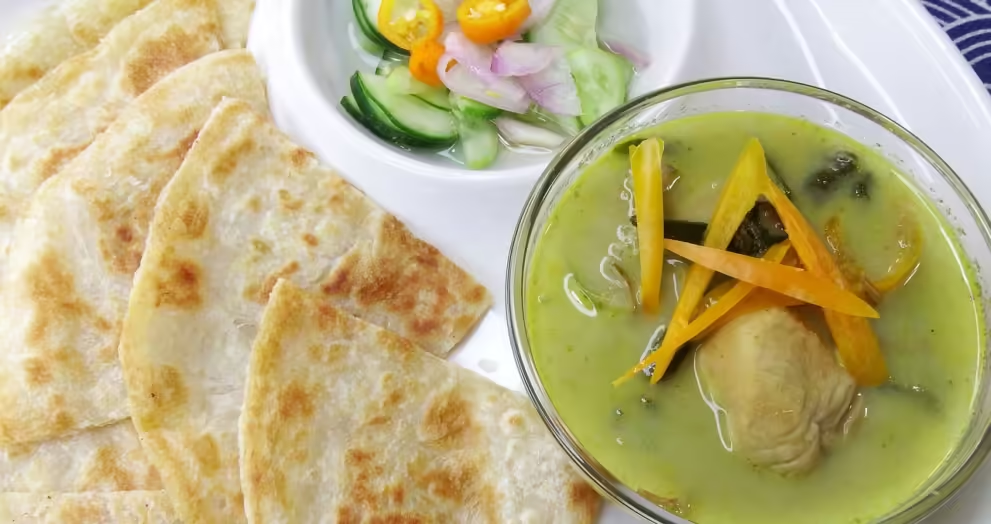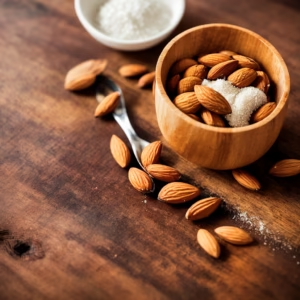Roti, a staple flatbread in Indian and South Asian cuisine, has gained popularity worldwide due to its simple ingredients, versatility, and health benefits. With the increasing concern about diet-related health issues, many are advocating the benefits of roti, particularly in weight loss and diabetes management. This article delves into the nutritional aspect of roti, shows how it can fit into various diets, and provides popular recipes that you can try at home.
What is Roti?
Roti is typically made from whole wheat flour (atta) and water, sometimes incorporating various types of flour for added nutrients. Often enjoyed with different gravies, vegetables, and lentils, it can be a wholesome addition to a meal. Understanding its nutritional value can help you make informed dietary choices.
Roti Nutrition and Health Benefits
Roti is celebrated for its balanced nutritional profile. Here are some critical nutritional aspects to consider:
– Calories: The calorie count of roti can vary based on preparation. A standard homemade roti contains about 104 calories. However, roti made with ghee can have significantly higher calories—roughly 150 calories.
– Nutritional Value: Roti is rich in essential nutrients, including carbohydrates, fibers, proteins, vitamins, and minerals. The fiber content aids digestion, making roti an excellent choice for individuals experiencing constipation.
– Weight Management: Roti is often viewed as a healthy replacement for rice for those looking to manage their weight. When considering “roti or rice which is better for weight loss,” roti often takes the lead due to lower calories and higher fiber content, which promotes satiety.
– Protein Content: Roti offers a low but significant amount of protein per serving. Depending on the type of flour used, the protein content can vary, making it a great option for those wanting plant-based protein sources.
– Roti for Diabetes: Incorporating roti into a diabetic diet can be beneficial. The glycemic index of whole wheat roti is lower compared to white rice, making it a preferable carbohydrate option for managing blood sugar levels.

Roti and Weight Loss
Roti can be a beneficial addition to a weight loss regimen, primarily due to its high fiber content and ability to keep you feeling full longer. However, moderation is key. If you consume roti with high-calorie accompaniments, such as ghee or creamy gravies, it may negate its benefits. Here are some considerations regarding roti’s impact on weight:
– Roti without Ghee: A roti served without ghee contains only about 104 calories, which makes it a lighter option for those monitoring their weight. On the other hand, roti with ghee can elevate the calorie count but may provide additional flavor and satisfaction.
– Roti can Gain Weight: While roti itself isn’t the culprit in weight gain, consuming it in excess, especially with calorie-dense foods, can lead to weight increase.
Popular Roti Recipes
Here are some popular and nutritious roti recipes to include in your diet:
1. Whole Wheat Roti:
– Ingredients: Whole wheat flour, water, salt (optional).
– Preparation: Knead the flour with water into a dough, roll into flat circles, and cook on a hot griddle until both sides are browned.
2. Multigrain Roti:
– Ingredients: A mix of whole wheat flour, besan (gram flour), bajra (pearl millet flour), and water.
– Preparation: Prepare the dough similar to whole wheat roti and enjoy the nutty flavor and benefits of various grains.
3. Stuffed Roti (Aloo Paratha):
– Ingredients: Whole wheat flour, boiled potatoes, spices, and ghee.
– Preparation: Stuff the rolled-out dough with spiced potatoes, flatten, and cook on the griddle.
4. Spinach Roti (Palak Roti):
– Ingredients: Whole wheat flour, spinach puree, spices.
– Preparation: Combine spinach puree with flour to create a vibrant green roti that’s packed with iron and vitamins.
Frequently Asked Questions about Roti
1. How many calories are in roti?
– A standard homemade whole wheat roti contains about 104 calories, while a roti made with ghee can have around 150 calories.
2. Is roti good for weight loss?
– Yes! Roti made from whole grains can be beneficial for weight loss due to its high fiber content and lower calorie count compared to rice.
3. Can roti help manage diabetes?
– Yes, roti has a lower glycemic index than white rice, making it a better choice for regulating blood sugar levels in diabetic patients.
4. Is roti or rice better for weight loss?
– Roti is often considered a better option for weight loss as it typically contains fewer calories and offers more fiber per serving.
5. What are the benefits of roti for constipation?
– Roti’s high fiber content helps promote healthy digestion and regular bowel movements.
Conclusion
Incorporating roti into your diet can open avenues not only for health benefits but also for culinary creativity. Seen as an essential part of many diets, the versatility and nutritional value of roti make it an ideal candidate for anyone looking to eat healthily, manage their weight, or maintain stable blood sugar levels. Whether enjoyed with a dollop of ghee or eaten plain, roti can effectively support a balanced lifestyle.
Citations
1. “The Nutrition of Whole Wheat Roti” – Journal of Food Science
2. “Managing Diabetes Through Carbohydrate Choices” – Diabetes Care Journal
3. “The Impact of Whole Grains on Weight Management” – American Journal of Clinical Nutrition
Information Sources
– USDA Food Composition Database
– Healthline
– NutritionData
– Medical News Today
By understanding the nutritional value of roti and utilizing simple yet delicious recipes, you can enjoy its benefits while staying healthy!
“Unleash your curiosity! Dive into thrilling travel adventures, blockbuster movie insights, cutting-edge health tips, and the latest tech breakthroughs! For the freshest blog posts, visit Wanderers Blog. Don’t miss out—subscribe to our newsletter today!”












